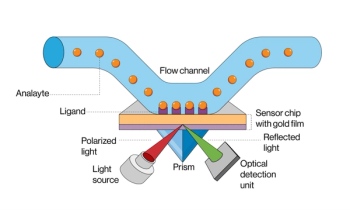
How Dissolved Organic Matter Shapes Water Quality
A recent study highlights the potential of dissolved organic matter (DOM) as a key indicator for water quality management in Lake Baiyangdian.
A recent study published in Limnologica examined how using dissolved organic matter (DOM) can help maintain water quality (1). This study, led by author Pengfei Wang and a team of researchers from Beijing Normal University and the Chinese Research Academy of Environmental Sciences, provides new information about characteristics of DOM and its potential as a water quality indicator in lakes facing environmental challenges like eutrophication (1).
Lake Baiyangdian is the largest natural freshwater wetland on the North China Plain (2). It is divided into four areas: the Unartificial Area (UA), Village Area (VA), Tourism Area (TA), and Breeding Area (BA). Each area presents distinct environmental pressures and human activities. The researchers hypothesized that these variations would affect the abundance, properties, and transformation of DOM in the lake, influencing its biogeochemical cycles and energy flow (1). Lake Baiyangdian has undergone ecological shifts over the past 70 years based on diatom assemblages in a sediment core, and it is also facing anthropogenic disturbances as well (2). In the 21st century, rising concerns about the effects of climate change have also exacerbated the concern over the health of this wetland.
DOM is a significant carbon reservoir in aquatic ecosystems. It is a source of energy in these ecosystems (3). In this study, the researchers attempted to characterize DOM properties and see if they can link them to water quality indicators across the lake’s four zones. To do so, the team used advanced analytical tools, including excitation-emission matrix and parallel factor analysis (EEM-PARAFAC) along with ultrahigh-resolution Fourier-transform ion cyclotron resonance mass spectrometry (FT-ICR MS) (1).
The study revealed that DOM in Lake Baiyangdian is primarily composed of protein-like substances, with significant contributions from human activities in certain areas (1). The tyrosine-like component (C1), identified as a key exogenous marker, showed a stronger presence in VA and BA—zones with more intense anthropogenic activity—compared to UA and TA (1).
Using FT-ICR MS, the researchers were able to see that the molecular composition of DOM mostly comprised of lignans (1). This finding highlights the critical role macrophytes play in shaping the material structure of DOM in the lake.
This study explored more than the molecular and fluorescence characteristics of DOM. They also investigated the associations between DOM properties and water quality indicators. Using the Mantel test, which is a statistical test that studies spatial structures in data and their correlation (4), the researchers discovered that the connections between DOM and nitrogen compounds, such as nitrate (NO₃⁻-N) and ammonia (NH₃-N), were more pronounced in VA and BA, areas heavily influenced by agricultural runoff and aquaculture (1).
By linking DOM characteristics to nutrient levels, the study provides a framework for addressing eutrophication and other water quality challenges in macrophyte-dominated lakes like Lake Baiyangdian. This research highlights the value of integrating optical spectroscopy with ultrahigh-resolution mass spectrometry (UHRMS) to gain a holistic understanding of DOM dynamics (1). By combining these techniques, the team effectively captured the complexity of DOM origins and properties, offering insights into how these factors vary across different functional areas of the lake.
The study also emphasized the importance of tailoring water quality management strategies to the specific characteristics of each lake zone. For instance, the strong correlation between DOM properties and nitrogen levels in VA and BA suggests that mitigating nutrient pollution in these areas could significantly improve water quality (1).
With its comprehensive analysis of DOM properties and their implications for water quality, the offers a model for applying advanced analytical techniques to tackle pressing environmental challenges in aquatic ecosystems worldwide.
References
- Wang, K.; Ren, H.; Yuan, S.; Jiang, X.; Wang, P. Exploring the Diversity of Dissolved Organic Matter (DOM) Properties and Sources in Different Functional Areas of a Typical Macrophyte-derived Lake Combined with Optical Spectroscopy and FT-ICR MS Analysis. J. Environ. Sci. 2025, 147, 462–473. DOI:
10.1016/j.jes.2023.11.027 - Mao, X.; Liu, L.; Zhao, H.; et al. Abrupt Diatom Assemblage Shifts in Lake Baiyangdian Driven by Distinct Hydrological Changes and Yet More So by Gradual Eutrophication. Limnologica 2024, 105, 126155. DOI:
10.1016/j.limno.2024.126155 - Wymore, A. S.; Rodriguez-Cardona, B.; McDowell, W. H. Understanding Dissolved Organic Matter Biogeochemistry Through In Situ Nutrient Manipulations in Stream Ecosystems. J. Vis. Exp. 2016, 116, 54704. DOI:
10.3791/54704 - Legendre, P.; Fortin, M.-J.; Borcard, D. Should the Mantel Test Be Used in Spatial Analysis? Met. Ecol. Evol. 2015, 6 (11), 1239–1247. DOI:
10.1111/2041-210X.12425
Newsletter
Get essential updates on the latest spectroscopy technologies, regulatory standards, and best practices—subscribe today to Spectroscopy.





